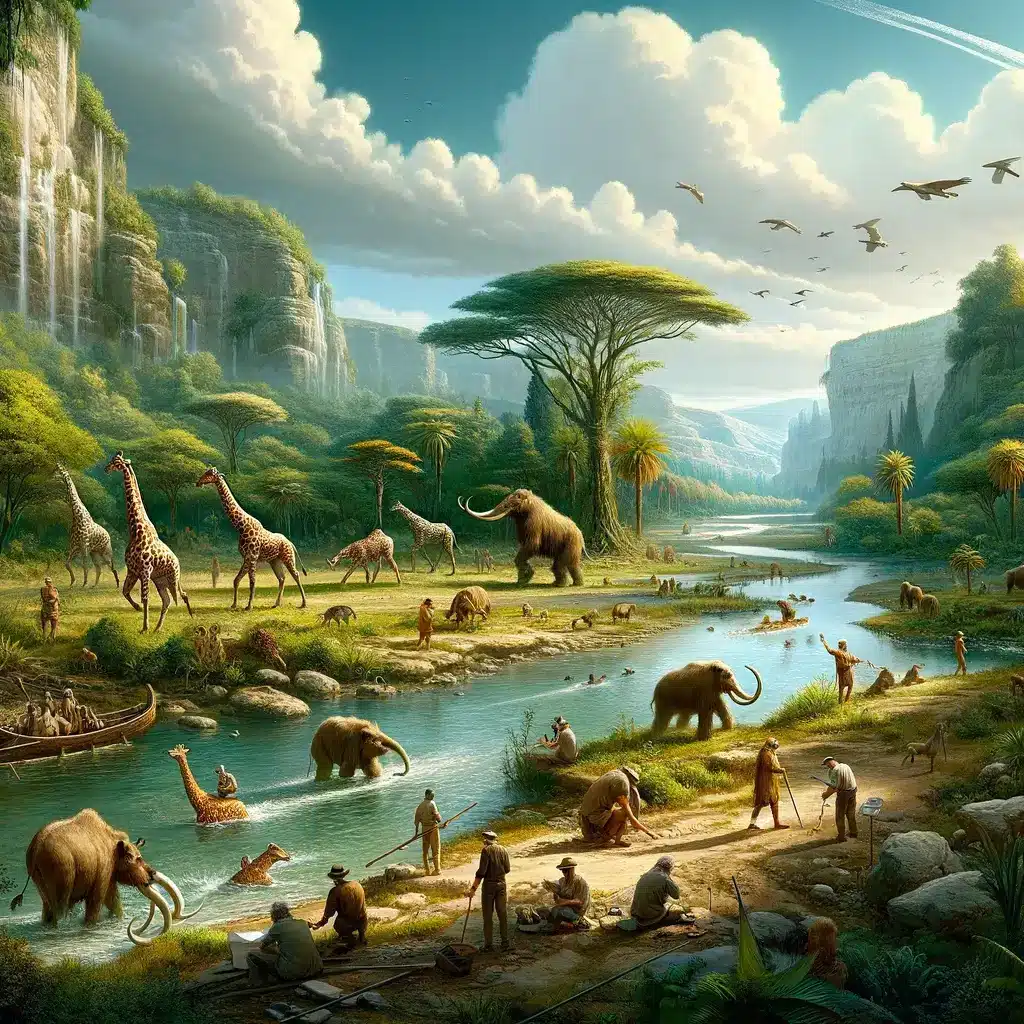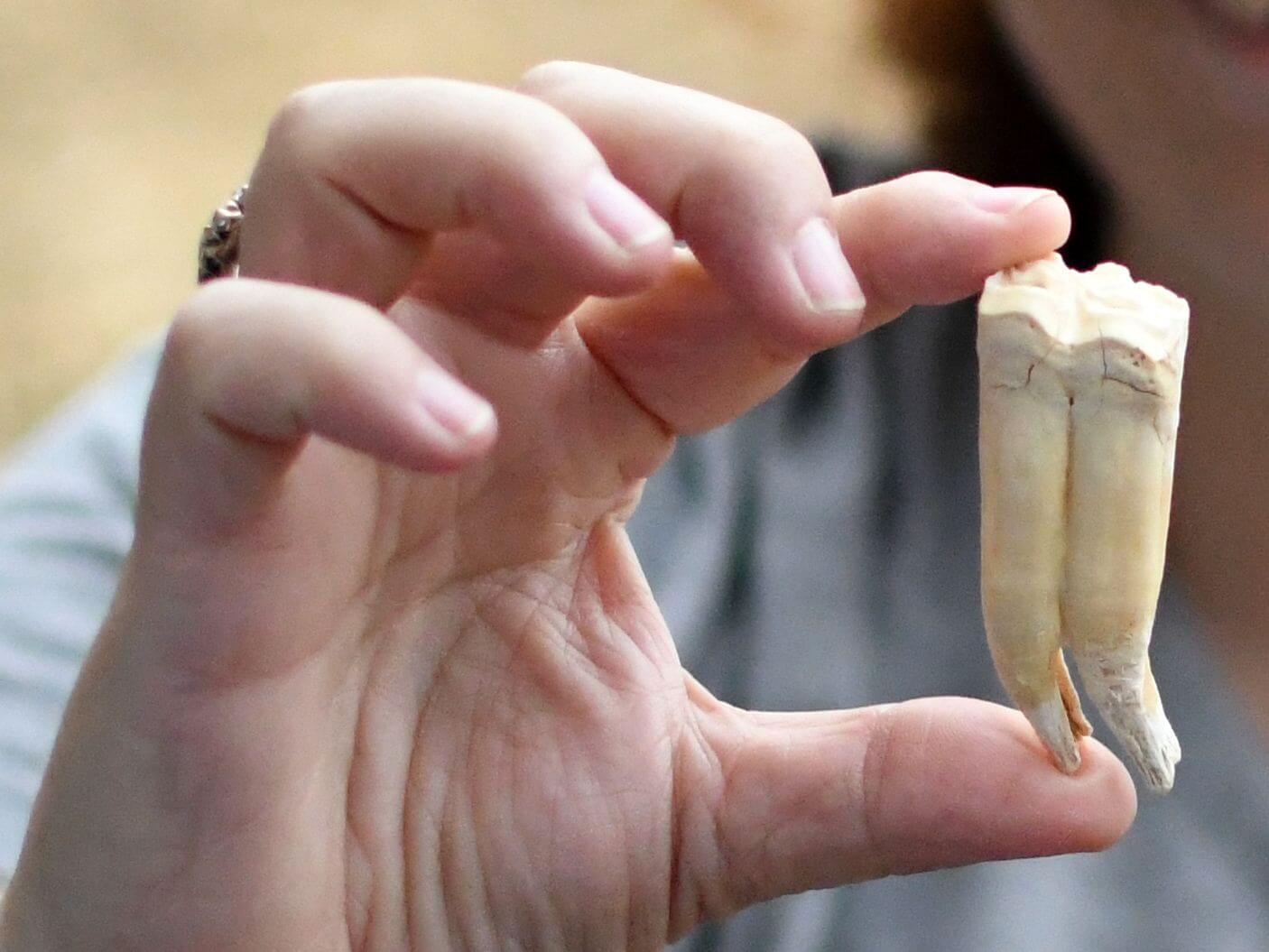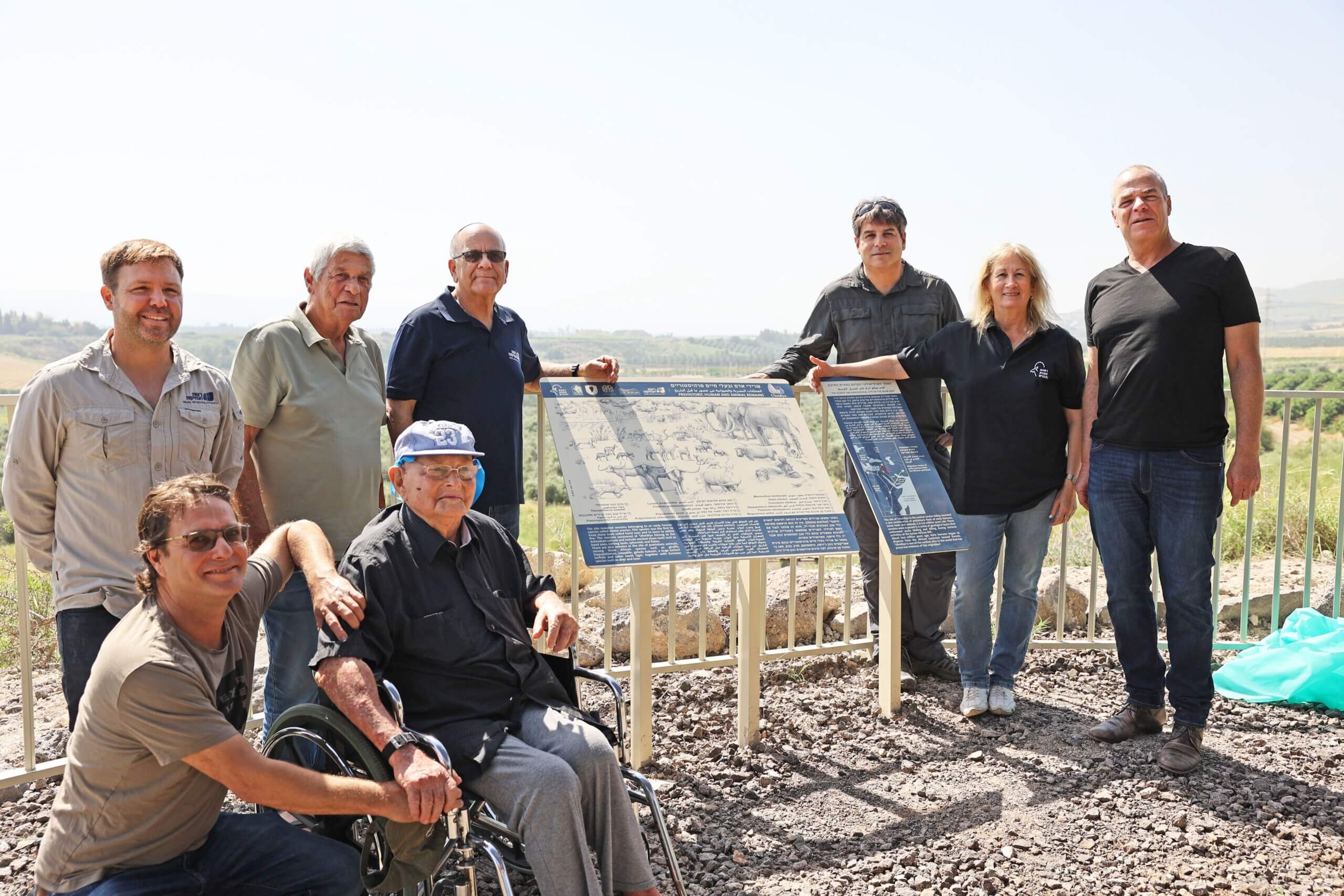The globally important prehistoric site, the Ovadia National Park, was inaugurated (Ubeidiya) in the Jordan Valley, which is the oldest in Israel (about 1.6 million years ago) and one of the oldest in the world outside of the African continent * There was a meeting between animals from Africa and Europe

In the past, giraffes and mammoths roamed here: Ovadia National Park (Ubeidiya) in the Jordan Valley - an archaeological site of global importance for the study of the history of mankind - the oldest in Israel and the oldest in the world outside of the African continent, was inaugurated today (Thursday, 4/4) in a solemn ceremony.
The ceremony was held in the presence of Jordan Valley Regional Council Chairman Idan Greenbaum, Director of the Antiquities Authority Eli Escozido, Director of the Nature and Parks Authority Raya Shurki, Chairman of the Kinneret Drainage and Streams Authority Moti Dotan, and the representative of the delegation of the new excavations in Ovadia, Prof. Omri Barzilai.

The site, located near Kibbutz Beit Zera, was discovered in 1959 by Izzy Marimsky, a resident nature teacher. The site has since been excavated by several expeditions of researchers, led by Prof. Moshe Shetaklis, Prof. Ofer Bar-Yosef and Prof. Eitan Chernov. These, revealed in the place remains of ancient man, tools of siege stone, limestone and basalt, evidence of animals such as giraffes, tigers, a horse (hippopotamus), and even animals that have become extinct from the world, such as mammoths and saber-toothed cats.
The man who lives in Obadiah belongs to the species known as Homo erectus, and was recently published study About the human remains that were discovered in the collections of the Shtaklis excavations, which indicate that the spread of man from Africa to the rest of the world was not a one-time event, but was done in waves.
"The rare site in Ovadiya parallels the Oldobai sites from East Africa, also known as the "Cradle of Humanity Sites", Explain Prof. Barzilai from the Antiquities Authority and the University of Haifa, and Prof. Miriam Belmakar from the University of Tulsa in the USA.
"Ovadia has a long sequence of geological layers, the oldest of which is about 1.6 million years old. About 30 of the layers contain evidence of human activity. Ovadia is of great geological importance for understanding the surface of the earth in the period of time between 2-1 million years. At that time, there was volcanic activity in our region, at the same time as the expansion and deepening of the Syrian-African rift."
"The rare site in Ovadiya parallels the Oldobai sites from East Africa, also known as the "Cradle of Humanity Sites", Explain Prof. Barzilai from the Antiquities Authority and the University of Haifa, and Prof. Miriam Belmakar from the University of Tulsa in the USA.
"Ovadia has a long sequence of geological layers, the oldest of which is about 1.6 million years old. About 30 layers contain evidence of human activity. Ovadia is of great geological importance for understanding the surface of the earth in the period of time between 2-1 million years. At that time, there was volcanic activity in our region, at the same time as the expansion and deepening of the Syrian-African rift."
Since the site is tilted (as a result of late tectonic activity) most of the layers are exposed, allowing a journey back in time, to more than a million years ago.
"The level of preservation of the findings at the site is high, and allows for the reconstruction of the ancient ecological environment in the Jordan Valley," say the researchers. The variety of species found in Ovadia (most of which are extinct) is unique, and includes African species alongside European species. The flint and stone tools in Ovadia were used by the inhabitants of the site for daily activities (cutting and butchering animals, processing vegetable food and more). are characteristic of the ancient Illustrious culture, and include, among other things, hand stones, cutting tools, splashing tools and spheroids (stone balls)".
Since the site is tilted (as a result of late tectonic activity) most of the layers are exposed, allowing a journey back in time, to more than a million years ago.
"The level of preservation of the findings at the site is high, and allows for the reconstruction of the ancient ecological environment in the Jordan Valley," say the researchers. The variety of species found in Ovadia (most of which are extinct) is unique, and includes African species alongside European species. The flint and stone tools in Ovadia were used by the inhabitants of the site for daily activities (cutting and butchering animals, processing vegetable food and more). are characteristic of the ancient Illustrious culture, and include, among other things, hand stones, cutting tools, splashing tools and spheroids (stone balls)".
Since 1999, the last excavation season, the site stood abandoned and exposed to natural hazards until 2021, when excavations at the site were renewed for targeted research, Led by Prof. Omri Barzilai from the Antiquities Authority and Prof. Miriam Belmakar from the University of Tulsa in the USA, after him - the process of preserving and developing the site, to make it accessible to the general public, began.
In 2021, the Nature and Parks Authority declared Ovadi as a national park. At the same time, the site was joined to the national project for the restoration and regulation of the Jordan River, led by the Kinneret Drainage and Streams Authority and the Jordan Valley Council.
In the recent period, all the entities partnering in the project worked to make the Ovadia National Garden available to visitors. The access roads to the site were prepared, and a perimeter footpath was established on the site and explanatory signs were placed.
This is the first of three phases, where in the next phase, the hut of the first excavated expedition will be developed instead into a visitor center.

Head of the Jordan Valley Regional Council and Chairman of the Association of Kinneret Cities, Idan Greenbaum, said at the ceremony: "We are proud to be partners in the important project of opening the national park in Obadiah to the general public, as part of the extensive actions we are taking to develop the area downstream of the Jordan. I invite everyone to come here, and see up close one of the most important sites in the world and the prehistoric findings in it."
Director of the Antiquities Authority, Eli Escozido, said: "This is a historic day for prehistory. The Antiquities Authority develops and makes dozens of archaeological sites accessible to the general public each year, but the case of Ovadia is unique: it is a prehistoric site of invaluable scientific importance for the study of humanity. Past attempts to develop the site were not successful due to the lack of partners for its management and maintenance, but the site's transformation into a national park and its connection to the project to regulate the River Jordan promise it a good future. There is no doubt that the site will be a center of attraction for the visiting public from Israel and the world.
According to the Director General of the Nature and Parks Authority, Raya Shurki: "We are happy to make accessible to the public a site of such great historical importance that connects landscape and history. The Obadiah area in the Jordan Valley is an exciting journey back in time, on the site there are three important complexes that connect to one heritage story in the history of our country. First, the prehistoric site of Ovadia representing the beginning of man in the Middle East from about 1.5 million years ago. Secondly, the nearby Tel Ovadia - which represents the beginning of Israel, according to an Egyptian inscription of the Pharaoh from Ranpetah. And finally, the Menachemiah settlement, the beginning of Zionism, arose right in this area in 1901 and heralded the flourishing of Zionism in the entire area. The three sites tell and present the complete picture of the area and the life in it throughout history and up to the present day. I thank our partners, the Fund for Keeping the Areas Open, the Jordan Valley Regional Council, the Kinneret Drainage and Streams Authority, and the Antiquities Authority."
According to the CEO of the Kinneret Drainage and Streams Authority, Zvika Slutsky: "The downstream section of the Jordan was declared a national project. This after suffering for many years from pollution and neglect, due to its use for discharging sewage and diverting the salty springs from the north of the Kinneret. The goal of the project is to make the river in this section accessible to the hundreds of thousands of visitors who visit it, while maintaining its beauty, and turning it into a bathing and recreational area, with many parts of it completed. The Ovadia site is located on the western edge of the Mord Jordan Park, with the entire route benefiting from an accelerated restoration momentum that the drainage authority has been leading since 2012. In the meantime, works were carried out to restore the prehistoric Ovadia site, which will now become an attractive and experiential visit site for the general public."
More of the topic in Hayadan:

4 תגובות
You are indeed right, the universe has existed for 13.8 billion years and the earth about 4.5 billion.
A large part of the treasure of ancient tools and bones of ancient mammoths and donkeys was first discovered by Izzy Marimski in Ovadia in 1959
Thanks to him, more archaeologists arrived at the place in 1960 who continued to investigate and dig for 15 years with additional discoveries and it took several more decades of neglecting the place until today
Izzy Marimski was born and raised in Jerusalem as a child as well
Engaged in archaeological excavations in the Sanhedria and surrounding areas of Jerusalem,
It can be said that his sharp eye, his curiosity, and his extensive knowledge of archeology, geology, biology and sciences in general led him to a significant understanding of the importance of the ancient fossils he discovered in her works
In 1959 and to continue the search in this stiff soil and to discover and collect additional finds from the head of the Homo erectus - an ape that lived in the area of Japan for 1.5 million years
Thanks to this humble and special man
It can be said that after 60 years we were awarded the first prehistoric prehistoric chapter in Israel
Hey
It is important for me to fix
The world has not existed for a million years🙃
Paradise?! Hell! Ask the Hittites (Samaritans). The lions would devour them.